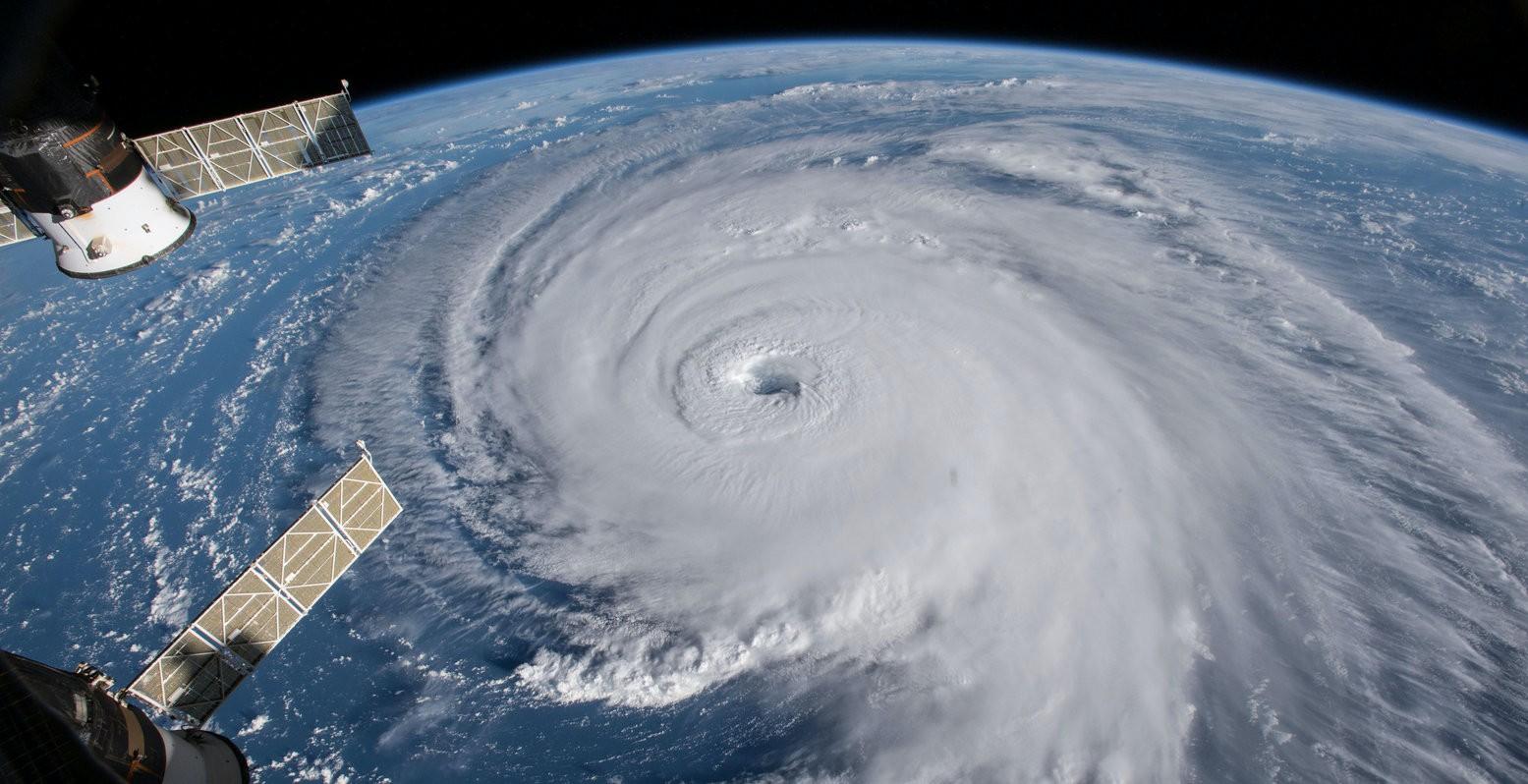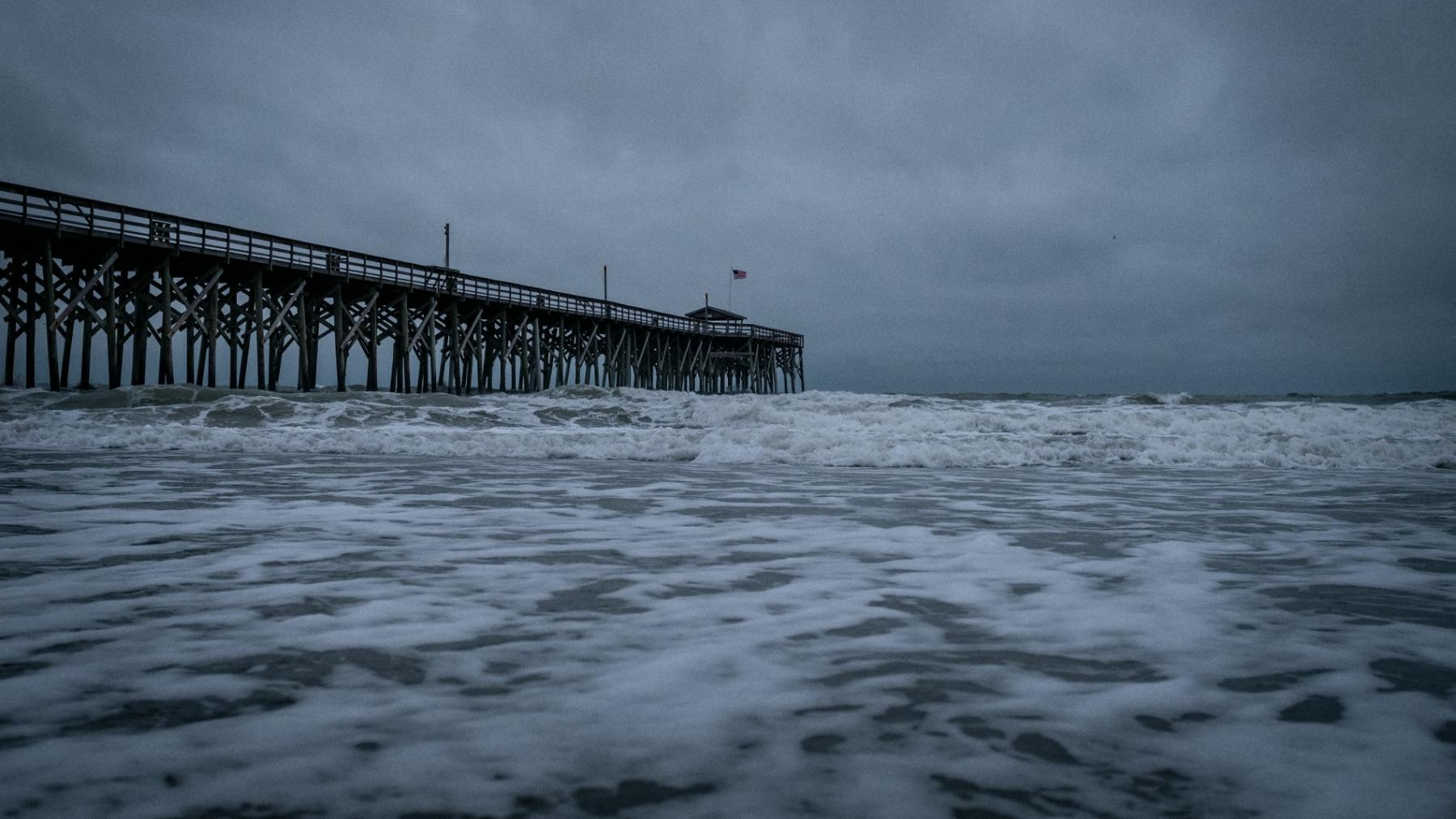
What are hurricanes, and why do they occur in a certain season
In very brief, a hurricane is a destructive tropical cyclone which occurs in a certain season each year. Let’s look into this in more detail. In this new lesson of the Windy.app Meteorological Textbook (WMT) and newsletter for better weather forecasting you will learn more about hurricanes.
What is hurricane?
We already know that the entire Earth’s atmosphere consists of different air masses — large volumes of homogeneous air. We also know that the air has weight. Well, different air masses have different weights. The less the air mass weighs, the less pressure it exerts on the Earth’s surface. The result is low pressure in one place and high pressure in another.
Air masses with low pressure are called cyclones. There’s also a certain wind direction in a cyclone. In the Northern Hemisphere, the air in a cyclone moves counter-clockwise, while in the Southern Hemisphere it moves clockwise.
Below you can see a satellite image of a cyclone. Now you can guess that the image was taken in the Northern Hemisphere: you can see from the cloud that the air flows are directed counter-clockwise from the borders to the center of the cyclone.
If a cyclone is formed in the hottest region of our planet — the tropics — it is called a tropical cyclone. Relatively weak tropical cyclones are called tropical storms (wind speed in a storm — from 18 m/sec), and stronger ones are called hurricanes (wind speed from 33 m/sec).
So the hurricanes are strong tropical cyclones that have formed over the Atlantic Ocean or in the eastern Pacific, in the tropical latitudes of the Northern Hemisphere. Tropical cyclones from the western Pacific Ocean are called typhoons. Hurricanes strike America, while typhoons — the Far East and Southeast Asia.

Photo: Hurricane Florence, seen from the International Space Station, in the Atlantic Ocean in September 2018 / NASA via Reuters
Why are hurricanes so destructive?
Let’s start a little far away. It’s very hot in the tropics. The surface of the ocean warms up, the water evaporates and the warm, humid air rises up, convection takes place.
As long as the warm air is surrounded by cold air, it can rise.
As it rises, the air cools down, the moisture condenses, clouds form and precipitation occurs. The cooled and relatively dry air descends to the ocean, heats up again from it, becomes humid and the process repeats.
But since the air is initially very, very humid, a huge amount of moisture condenses in it when it is cooled at heights. During condensation heat is generated: the air “took” heat from the ocean during evaporation, and now it gives this heat to the surrounding space. This means that the nearby air warms up and the air above is much colder — convection is possible again, new air rises up again! This way convection can get to the upper border of the troposphere — to a height of 12 km.
Such a powerful convection is only possible in tropical cyclones and causes heavy rains, thunderstorms and hurricane wind speeds.
By the way, precipitation in a tropical cyclone works “against it” because it cools the ocean hindering convection. If a tropical cyclone does not move fast enough, it can even destroy it completely. Warm ocean currents, on the contrary, work ’for it’ - they are an additional source of heat and contribute to convection.

Photo: adam-kring / unsplash
What is hurricane season?
Everything described above is possible if the ocean temperature is really high — from 26.5 °С. Such temperatures in the waters of the Atlantic can be observed from early June to the end of November — this period is called the ‘hurricane season’. Hurricane activity peaks in late August and throughout September.
There is a tradition to attribute names to tropical storms and hurricanes. That’s why at the height of the hurricane season you can often see headlines like “Dorian approaching the U.S., evacuation announced” or “Damage from Florence estimated at $50 billion”, etc.
Text: Windy.app team
Cover photo: iStoke
You are also find usefull
How do we measure weather. The complete guide to weather instruments
The 2022 Atlantic Hurricane Season is expected to be above-normal according to the NOAA's Outlook
Latest News
Professional Weather App
Get a detailed online 10 day weather forecast, live worldwide wind map and local weather reports from the most accurate weather models.
Compare spot conditions, ask locals in the app chat, discover meteo lessons, and share your experience in our Windy.app Community.
Be sure with Windy.app.



